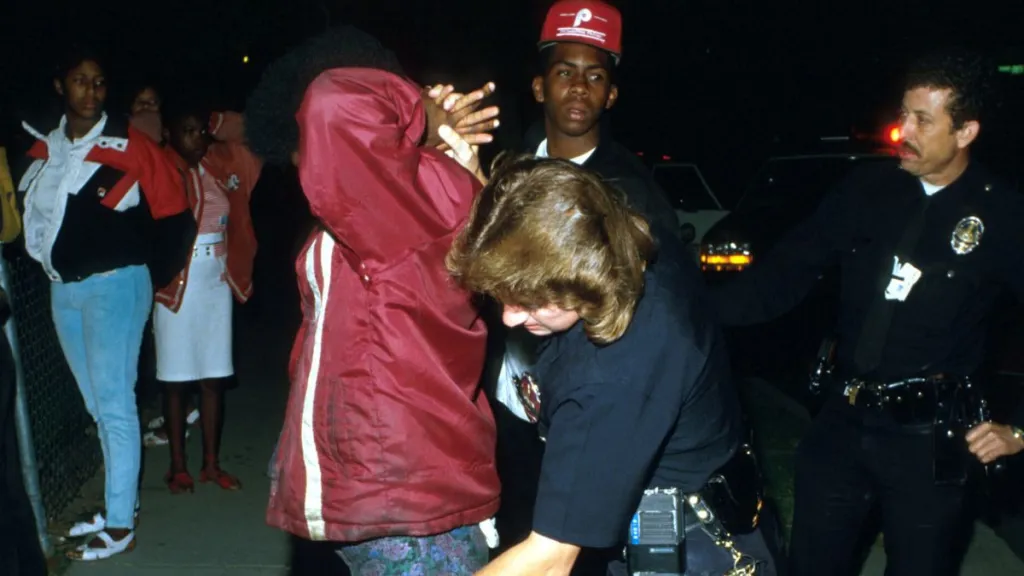The Bloods is a notorious LA-based street gang involved in various crimes, including drug trafficking, theft, assault, burglary, and even murder. Most of its members are African American. Furthermore, according to Britannica, they are associated with the color red. The biggest and fiercest rival of the Bloods is another LA-based street gang called the Crips.
The purpose of the formation of the Bloods was to compete against the Crips. Everything began in the 1960s when the Crips’ founder Raymond Washington and other members attacked two students, Sylvester Scott and Benson Owens. This led Scott to form the Piru Street Boys. This gang was the first “Bloods” gang. Their initial mission was to protect themselves from the Crips. Gradually, Benson Owens established the West Piru gang. Furthermore, many non-Crips gangs used to call each other “blood.”
In the year 2008, a documentary titled Crips and Bloods: Made in America showcased the rise and intense rivalry between the two LA-based street gangs. Stacy Peralta directed this documentary.
The synopsis of Crips and Bloods: Made in America on IMDb reads, “With a first-person look at the notorious Crips and Bloods, this film examines the conditions that have lead (sic) to decades of devastating gang violence among young African Americans growing up in South Los Angeles.”
This documentary is available to stream for free on the YouTube channel Free Movies By Cineverse.
The Bloods rivals: Who are the Crips?
In 1971, Stanley “Tookie” Williams and Raymond Washington formed the Crips. Their goal was to protect themselves from gang violence. According to Britannica, they are usually seen wearing blue clothing. Just like the Bloods, the majority of its members are of African American origin. The original idea of the Crips was to become a political group. However, it soon established itself as a gang.
Raymond Washington died in a drive-by shooting in 1979, while Stanley Williams got arrested for the murder of four. Furthermore, he received a death sentence in 1981.
Before his execution, WBAI Pacifica Radio conducted an interview with him, where he stated, “My lack of fear of this barbaric methodology of death, I rely upon my faith. It has nothing to do with machismo, with manhood, or with some pseudo former gang street code. This is pure faith, and predicated on my redemption. So, therefore, I just stand strong and continue to tell you, your audience, and the world that I am innocent and, yes, I have been a wretched person, but I have redeemed myself.”
He further said, “And I say to you and all those who can listen and will listen that redemption is tailor-made for the wretched, and that’s what I used to be … That’s what I would like the world to remember me. That’s how I would like my legacy to be remembered as: a redemptive transition, something that I believe is not exclusive just for the so-called sanctimonious, the elitists.”
Williams was executed on December 13, 2005, by lethal injection at the San Quentin State Prison. At the time of his death, he was 51 years old.










